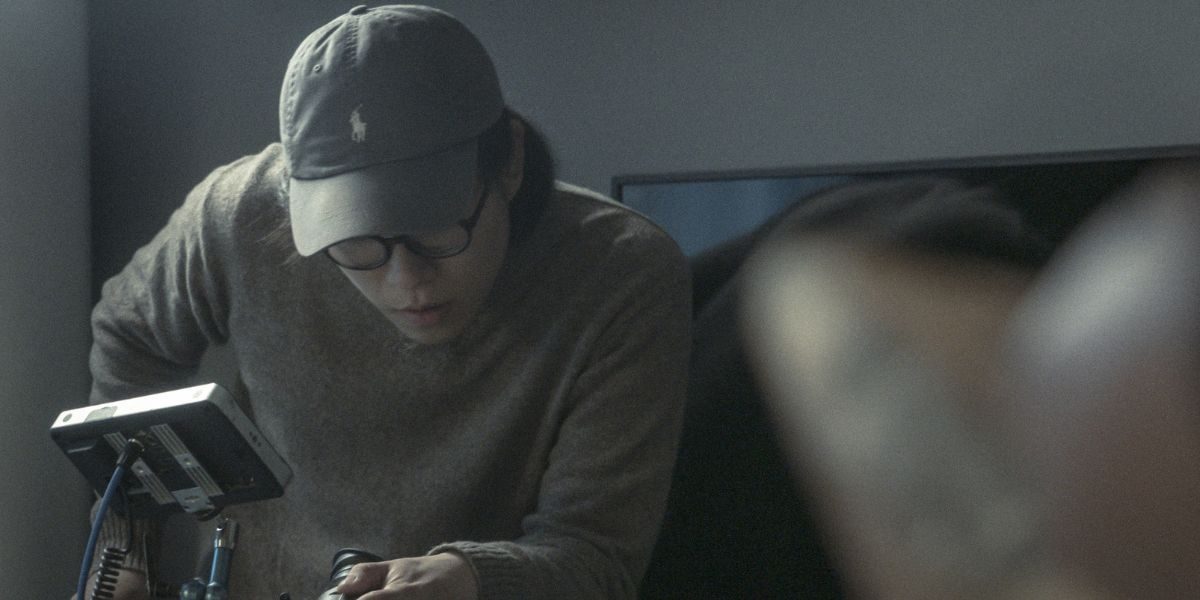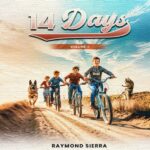By: Mason Whitaker
Los Angeles-based camera operator Yijie Qiao brings a dreamlike lyricism and gritty authenticity to his work, from the intimate Baby Don’t Cry to the absurdist Day Tripper, earning accolades on the international festival circuit.
From China to the World
Yijie Qiao’s cinematic eye was shaped in China, sharpened in Los Angeles, and reimagined in New York. Over a decade behind the camera, his journey has been anything but linear. From guerrilla shoots in both China and the U.S. to internationally acclaimed films, Qiao’s visual language—lyrical, immersive, and deeply intentional—has become one of the most distinctive and visionary voices at the intersection of Eastern and Western independent cinema.
His recent projects highlight his range. Qiao was the camera operator on Day Tripper (2023), an offbeat ensemble drama that won the Grand Prix at the 38th Fribourg International Film Festival—one of Europe’s leading festivals spotlighting bold, auteur-driven cinema—and was also selected by major international festivals including Warsaw, Pingyao, and Moscow. He also served as the camera operator on Baby Don’t Cry (2021), a coming-of-age indie film that premiered at Fantasia and screened at Oscar-qualifying festivals like New Orleans and Victoria, winning the Industry Choice Award at Dances With Films in Los Angeles.
Handheld Intimacy in Baby Don’t Cry
Baby Don’t Cry follows a 17-year-old Chinese immigrant girl named Baby, grappling with identity and trauma in suburban Seattle in America. Qiao immediately felt a personal connection to the story. “When I first read the script, it instinctively reminded me of when I was 19 and had just come to the U.S. for school,” he says. Drawing on his own experience of dislocation, Qiao used the camera to reflect the protagonist’s emotional volatility.
“I think 17 is an age of panic, of pretending to be calm, curious and full of fantasy, yet lonely and desperate to belong,” he says. “One moment you feel as free as a bird, and the next you’re lost in a forest of uncertainty.”
The team leaned into a raw, stylized visual style—shot entirely handheld, with DV camcorder footage and bursts of animation layered into the narrative. “We ultimately decided on a fully handheld approach,” Qiao explains. “Handheld cinematography isn’t new, but its greatest feature is unpredictability. Unlike a locked-off camera, handheld brings a visceral sense of participation—the camera itself becomes like another actor in the scene.”
That unpredictability proved essential. “It gave me more creative space to capture spontaneous moments. A more restrained shooting style might have missed those sparks of truth.”
In one climactic scene, Baby breaks up with her boyfriend Fox in a long take—swinging from icy silence to emotional chaos. Capturing the improvised moment required Qiao’s full emotional immersion. “I let my camera become an extension of myself—another performer in the room,” he says. “At that point, framing and lighting were just the baseline; the real task was capturing emotional collapse in real time.”
The payoff was immediate. The team nailed the scene in one take. “Everyone was silent watching the playback. I even saw someone had tears in their eyes,” Qiao remembers. “At one point I felt like I was that lost creature running wild in the valley, searching for identity and yearning for love,” he adds—drawing a metaphor that reflects both Baby’s character and his own filmmaking journey.

A Deep Focus Canvas in Day Tripper
If Baby Don’t Cry was pure handheld energy, Day Tripper required an entirely different strategy. A deadpan, absurdist chronicle of life in a northern Chinese town, Day Tripper evokes a visual tone akin to Beckett and Kafka. “Compared to Baby Don’t Cry, the biggest difference in Day Tripper was that we removed almost all camera movement,” Qiao explains. Instead, the film unfolds in fixed, locked-off frames. “It’s all static shots telling the story—letting the actors move within a stable composition.”
This minimalist approach demanded intense pre-visualization. “A fixed camera doesn’t mean you just plop it down and hit record,” Qiao says. “It requires meticulous blocking and planning. I had to coordinate each move with the actors so every shot played out cleanly in one frame.” If Baby offered improvisational freedom, Day Tripper was “like preparing to paint a series of meticulous oil paintings.”
Adding to this painterly language, Qiao employed deep focus cinematography throughout. Deep focus—a technique where both foreground and background remain sharply in focus—is a signature of Swedish auteur Roy Andersson. In Day Tripper, it serves a similar function: to present a full, uninterrupted view of the world and all the characters drifting within it.
“In this film, the world itself is like a huge, stable machine full of individual components,” Qiao says. “We wanted the audience to see both the big picture and each character drifting within it—all at once, in the same frame.”
To achieve that, he shot with wide lenses (35mm and below) and small apertures (T11 to T16), creating a large depth of field so that nothing drops out of focus. “Viewers can choose where to look and hopefully feel the interconnectedness of these characters in their environment.”
The results were stunning. Day Tripper’s deep-focus compositions invite the viewer to explore each frame on their own terms. Characters in the background are just as legible as those in the foreground, turning the screen into a living canvas of visual and social detail. “It’s not just one person’s story,” Qiao explains. “It’s a wandering journey through a community.”
This formal rigor paid off: Day Tripper won the Grand Prix at Fribourg, positioning Qiao as a visual stylist fluent in emotional and technical grammar. From pastel-colored streets to stoic interiors, the film’s calm compositions build an absurdist, observational rhythm far removed from the frenzied emotion of Baby Don’t Cry—yet equally resonant.
Fixed Shots, Fluid Emotions
Whether operating a trembling handheld camera amid the storm of teenage heartbreak or crafting a static deep-focus tableau of life’s quiet absurdities, Yijie Qiao brings a deeply human approach to cinematography. Working across cultures and formats, he adapts his style not to trends but to truth.
“At the end of the day, I’m not just showing a story with images—I want the audience to feel it,” he says.
From handheld dreams to deep focus realities, Qiao’s camera continues to move between worlds—and within them, always in search of emotional honesty.

















